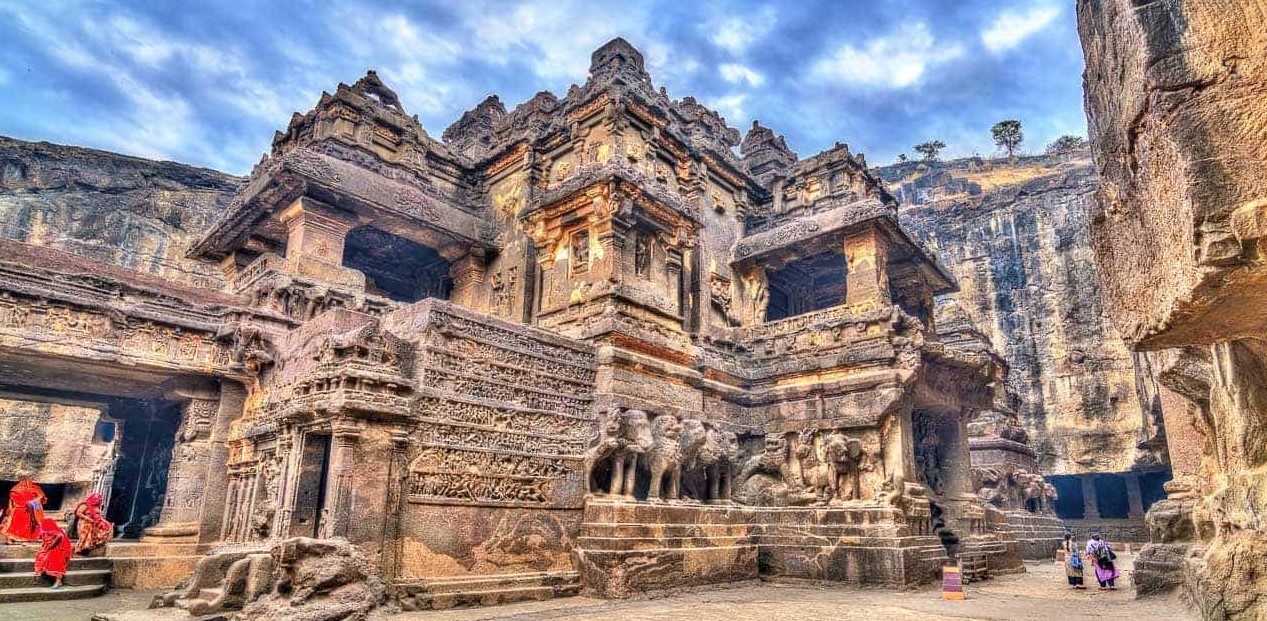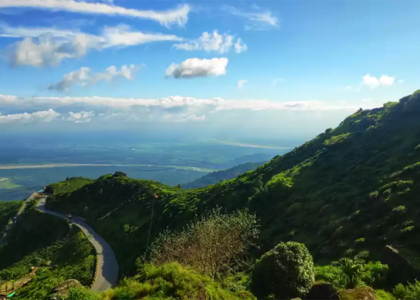
The Ajanta and Ellora caves are India’s architectural glory. These two mind-boggling caves are world renowned for their cave shrine, which was cut entirely by hand from the rock. These caverns remained hidden for a long period of time until they were found in 1819 by British army officer John Smith while on a hunting excursion. Ajanta and Ellora have since attracted a large number of people from all over the globe. UNESCO has declared Ajanta as a World Heritage Site. These two caverns’ amazing carvings and paintings are truly breathtaking.
These two caves are situated in the Sahyadri hills. Ajanta and Ellora, which are located near the Maharashtra city of Aurangabad, are now visited by history enthusiasts from all over the world. The majority of the material on this site is inspired by three distinct faiths: Hinduism, Buddhism, and Jainism. Buddhism has occupied the greatest amount of territory among them. Numerous Buddhist artworks and sculptures evocatively recall Lord Buddha’s wonderful teachings. Ajanta and Ellora caves recount the history of Buddhism from 200 BC to 700 AD. Apart from their outstanding construction, these two caves are famous religious destinations.
Ajanta Caves
Since their discovery in the nineteenth century, the Caves of Ajanta have become very famous with visitors. There are 29 caves in Ajanta, each with its own unique collection of paintings and sculptures. Numerous Viharas and Chaityas discovered in the caves indicate that it was a Buddhist study centre. In these caves, monks used to practise Buddhist ceremonies. The building of Ajanta depicts the history of Buddhism from 200 BC to 650 AD. Ajanta is located around 100 kilometres from Aurangabad and has excellent road, rail, and air access to major cities.
The majority of the amazing figures carved into the walls of these structures were created with common instruments such as a hammer and chisel. Ajanta’s sculptures are a magnificent display of our forefathers’ skill. These caves have some breathtakingly magnificent wall murals of Buddhist deities such as Bodhisattvas, Padmapani, and Avalokiteshvara. Additionally, some sacred pictures and sculptures of Lord Buddha are beautifully preserved in the Ajanta caves. In some ways, these caves reflect the history of Buddhism in India during the period when the Hinayana sect gained prominence. While some of Ajanta’s paintings are influenced by Greek and Roman style, there are also elements of Chinese art. However, the most of it is influenced by Indian style and is rather distinctive.
Ellora Caves
Ellora Caves, located 30 kilometres from Aurangabad, are home to some of India’s most prized buildings. The majority of these caverns were carved between 350 and 700 AD. Ellora has 34 caverns dedicated to three distinct religions: Buddhist, Jain, and Hindu. The southern section has 12 Buddhist caves, the middle section contains 17 Hindu caves, and the northern section contains five Jain caves.
The Buddha’s lessons are conveyed via the sculptures and paintings in Buddhist caves. The majority of these caverns were utilised as Viharas or monasteries for Buddhist teachings and meditation. Kailasha temple is one of the most popular. It is situated in cave number 16. This Shiva temple is recognised as the world’s biggest monolithic building. Sixth and tenth caves exhibit images of Hindu and Buddhist faiths under one roof. The architecture of cave 29, often referred to as Dhumar Lena, is reminiscent of the legendary Elephanta cave temples and is dedicated to Lord Shiva.
The Jain Caves, situated a mile from Kailasha temple, are home to several exquisite Jain temples. There are sculptures of Parasnath in caves 32 and 34. We locate the sitting figure of Lord Mahavira in one cave. The existence of Hindu, Jain, and Buddhist sculptures on the same location demonstrates that religious harmony has existed in Indian civilization from ancient times.



